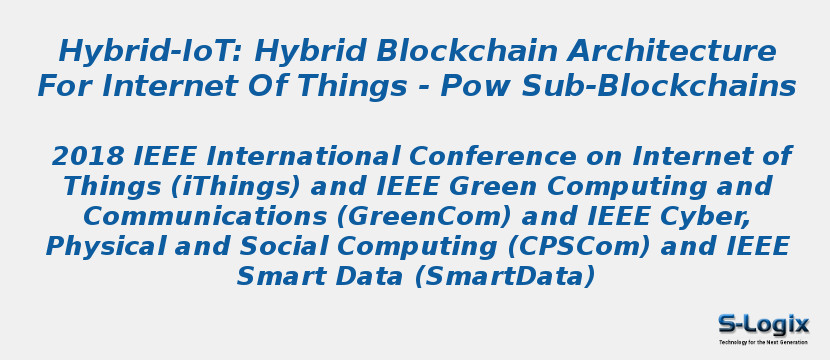Research Area: Internet of Things
From its early days the Internet of Things (IoT) has evolved into a decentralized system of cooperating smart objects with the requirement, among others, of achieving distributed consensus. Yet, current IoT platform solutions are centralized cloud based computing infrastructures, manifesting a number of significant disadvantages, such as, among others, high cloud server maintenance costs, weakness for supporting time-critical IoT applications, security and trust issues. Enabling blockchain technology into IoT can help to achieve a proper distributed consensus based IoT system that overcomes those disadvantages. While this is an ideal match, it is still a challenging endeavor. In this paper we take a first step towards that goal by designing Hybrid-IoT, a hybrid blockchain architecture for IoT. In Hybrid-IoT, subgroups of IoT devices form PoW blockchains, referred to as PoW sub-blockchains. Then, the connection among the PoW sub-blockchains employs a BFT inter-connector framework, such as Polkadot or Cosmos. In this paper, we focus on the PoW sub-blockchains formation, guided by a set of guidelines based on a set of dimensions, metrics and bounds. In order to prove the validity of the approach we carry on a performance and security evaluation.
Keywords:
Author(s) Name: Gokhan Sagirlar; Barbara Carminati; Elena Ferrari; John D. Sheehan; Emanuele Ragnoli
Journal name:
Conferrence name: IEEE International Conference on Internet of Things (iThings) and IEEE Green Computing and Communications (GreenCom) and IEEE Cyber, Physical and Social Computing (CPSCom) and IEEE Smart Data (SmartData)
Publisher name: IEEE
DOI: 10.1109/Cybermatics_2018.2018.00189
Volume Information:
